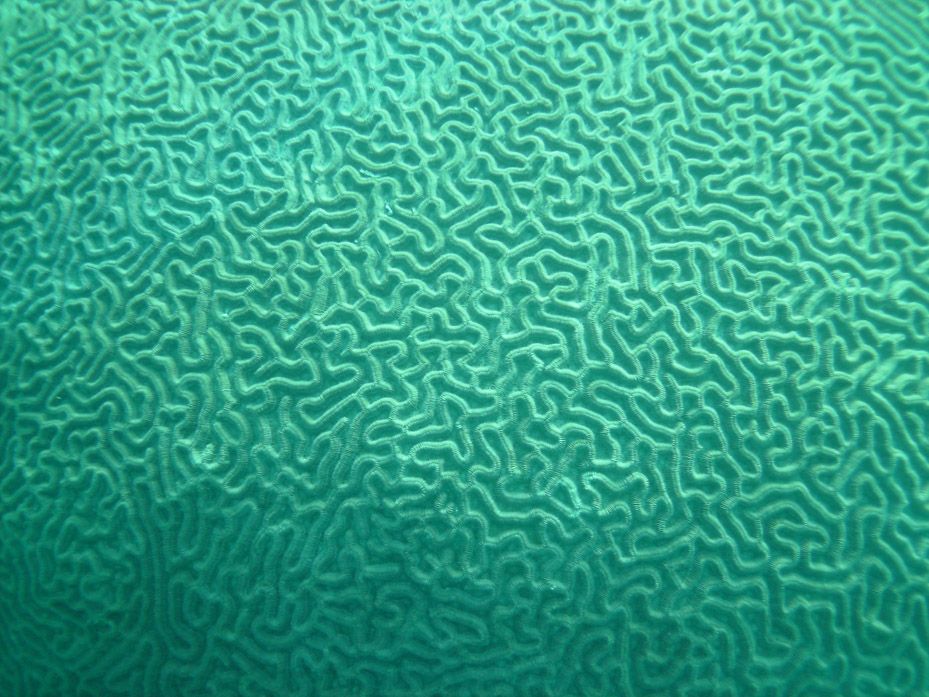
At this point, our exploration of the effects of hurricanes on wildlife has focused mostly on terrestrial systems. This is understandable, as humans are terrestrial ourselves. It’s much more challenging to observe freshwater or marine species because they spend their lives underwater, which we can’t breathe.
There are so many marine species, it will take several posts to cover all of the interesting ones. For now, we’ll approach it a lot like the land species, where we started with plants first. That means that this time we’re going to focus on sessile organisms, those that do not move.
Underwater Forests
One of the most prominent and well-known marine structures are the corals. Coral reefs are beautiful, bustling centers of species diversity. The most famous is the Great Barrier Reef of Australia, but we also have reefs here in Florida, though primarily in the Keys due to their need for tropical temperatures. We have 45 species of hard corals and 35 species of soft or octocorals in the state.
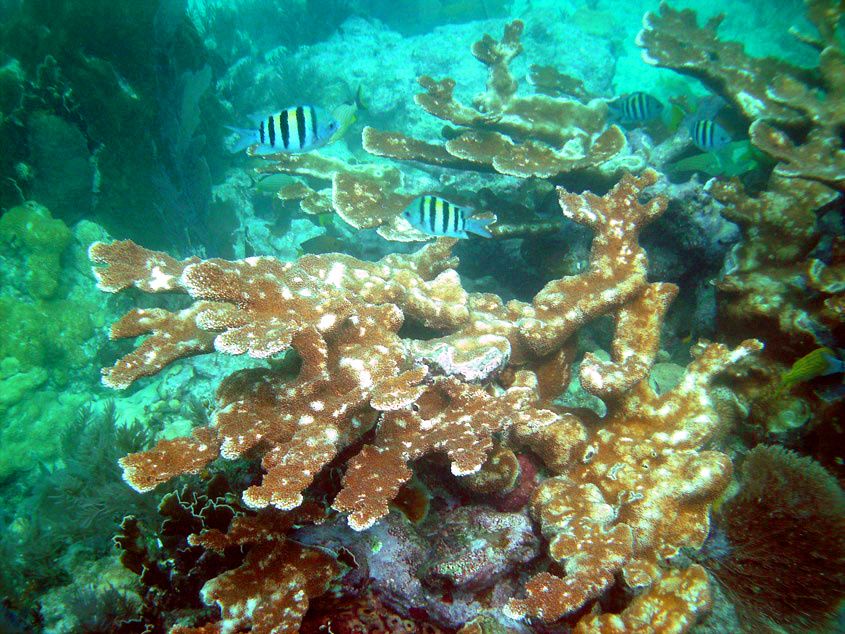
It can be easy to forget that the various reef structures are actually alive, composed of many small organisms called polyps. They appear similar to their close relatives, the sea anemones. This confusion is aided by their nocturnal tendencies (during the day, the organisms remain retracted in their ‘skeletons’ and emerge at night to filter feed when there are fewer predators).
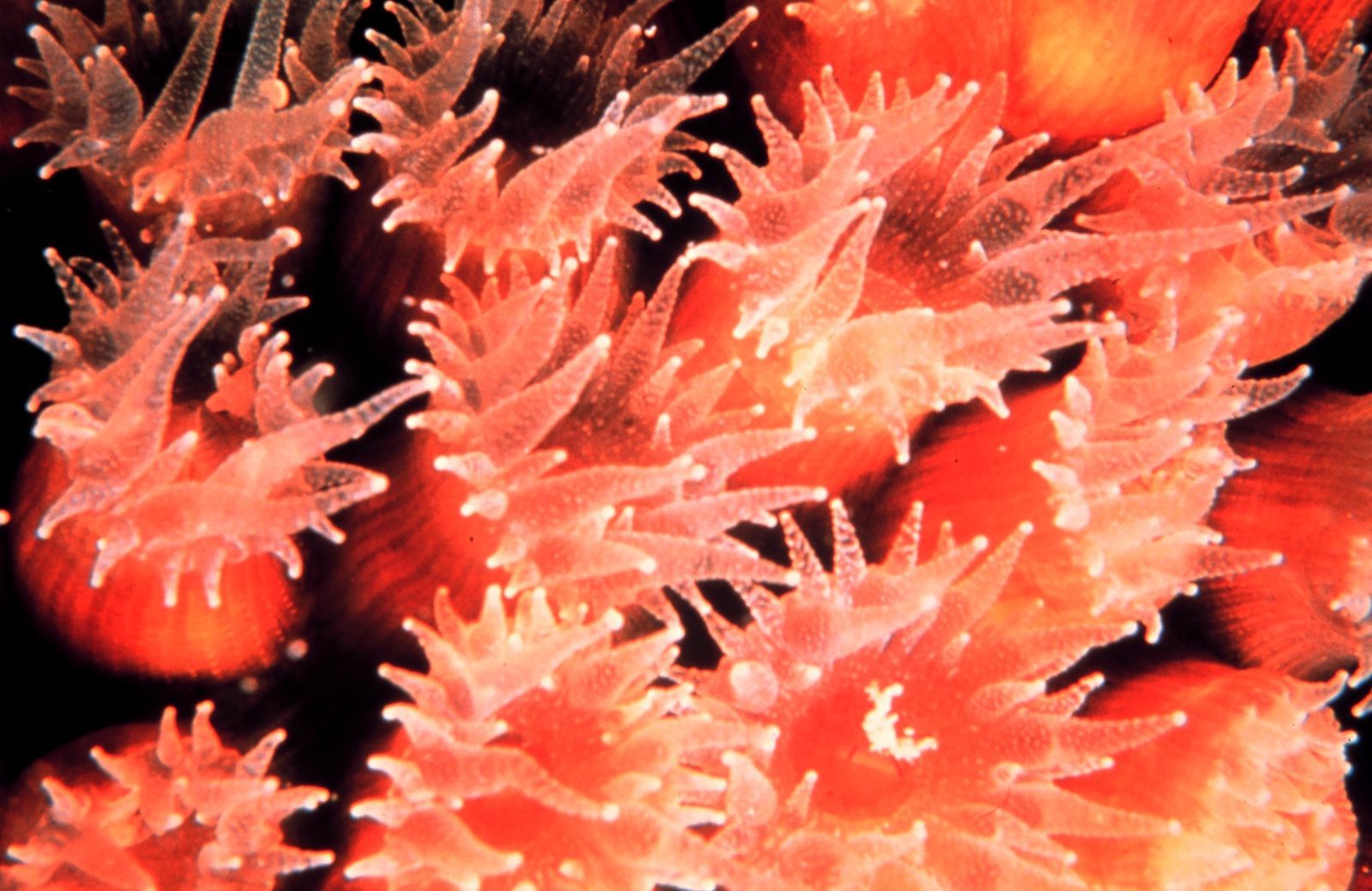
A vital component of many species of coral organisms are the symbiotic algae they contain called zooxanthellae. These algae are photosynthetic and provide a large portion of the nutrients that these corals require. Because of this, many corals are limited to shallow water where sunlight can penetrate. Without the algae, these corals eventually die. In fact, coral bleaching, the process of corals turning white and dead is directly caused by the loss of this algae.
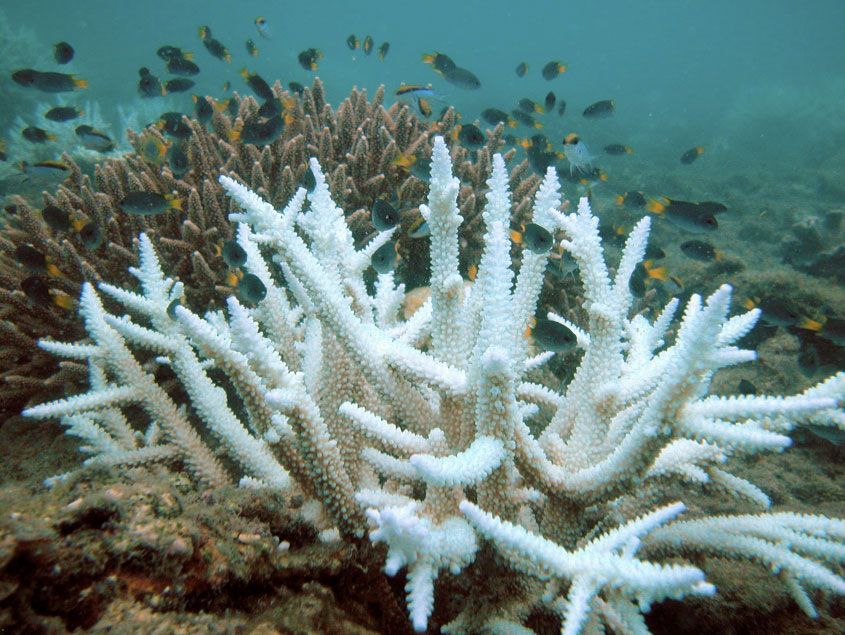
The need for shallow water means that coral reefs can be directly affected by the increased wave action caused by hurricanes. A severe storm can completely destroy whole swathes of corals. However, such breakage isn’t necessarily all bad. Remember that the large structures we see are not single organisms, but an entire colony of them. Pieces that break off have the potential to still survive if they can reattach to the seafloor. This can even allow corals to spread to new areas. Thus, the effects of wave action from hurricanes can be either positive or negative, due largely to random chance.
Hurricanes provide another, less obvious but even more substantial, benefit for corals. Globally, reefs are under significant threat and stress. One major factor in this is rising ocean temperatures. Most corals and their symbiotic algae can only survive in a narrow temperature band. One side-effect of a hurricane is a massive heat transfer from the ocean to the atmosphere. This helps mitigate increasing ocean temperatures in the short-term, which helps the corals deal with the warmer months of the year. The graph below shows the sea-surface temperature in the Florida Keys over the course of 2005, including the effects of hurricanes Dennis, Katrina, Rita, and Wilma. Unfortunately, this mitigation is likely not enough to combat the overall increase in ocean temperatures going forward.

Unfortunately, there are several potential entirely negative repercussions for corals from hurricanes. Most of these have to do with runoff caused by increased rainfall. Freshwater runoff can alter the salinity of the surrounding area, negatively impacting the organisms. Nutrient runoff can promote the growth of algae blooms, which can smother the coral and block it from the sunlight. Finally, sediment runoff and erosion can smother reefs in dirt and mud, choking them.
Callooh Callay
Most of Florida’s coastline isn’t suitable for coral reefs, but that doesn’t mean there aren’t important communities of sessile marine organisms. In particular, Estero Bay, near where I live, as well as Tampa Bay and Apalachicola Bay are well known for their oyster beds, sometimes called oyster reefs. These provide a similar ecological function to corals by providing habitat space for other organisms.
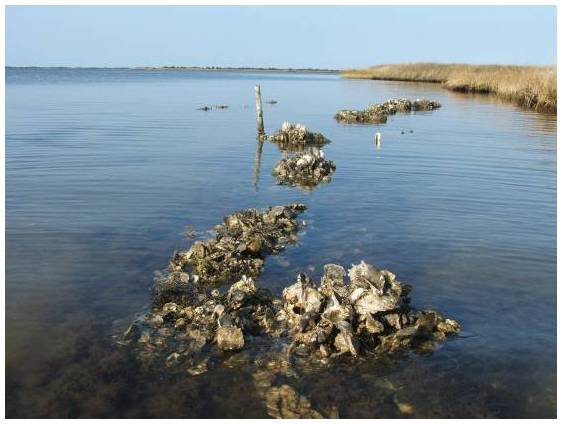
The eastern oyster, Crassostrea virginica, which makes up these beds, has also been a species of high economic importance historically (primarily as a food source as any pearls they create are small and of little value). Oyster farming still occurs in Florida and elsewhere in the United States, but disease and over-harvesting have devastated some areas, such as Chesapeake Bay.
More recently, efforts at oyster restoration are taking place in several places as the value of the structures themselves has been realized. Oysters are filter feeders and can thus improve water quality by serving as a strainer. Furthermore, oyster reefs act as natural barriers against wave action and erosion. Unlike seawalls or other artificial structures, which merely deflect wave force, oyster reefs can actually absorb this energy, reducing the erosion and stress on the actual shoreline. This means that we tend to focus on the impact of oysters on hurricanes, rather than the other way around.
In many ways, however, oyster reefs are very similar to corals in how they are affected by severe storms. While they are not as sunlight dependent, they still tend to remain in shallower waters, as those have the highest concentrations of plankton that they filter feed on. This means that they can be damaged by wave action. However, also like corals, this also has the potential for expanding the reef if the dislodged oysters come to rest on a suitable substrate.
Runoff is also a problem for oysters after a hurricane. Like corals, increased rainfall can alter salinity, which can negatively impact or even kill them. Sediments can increase turbidity and disrupt the oysters’ filter feeding, as can nutrient runoff.
Aren’t There More?
There are other sessile marine organisms in Florida, but their morphology is similar enough to the two main examples above that there isn’t a lot of new ground to tread. Sponges and anemones react similarly to corals; barnacles and mussels similarly to oysters.
While these are all animals, the fact that they are unable to move means that hurricanes affect them much more like terrestrial plants in some ways. The difference being that they are buffeted by wave action rather than wind.
Conclusions
Sessile marine organisms provide important habitat for a wide variety of other species. Because of that, and the important ecological services they can provide, it is important to consider how a major disruptive event, like a hurricane, can impact them. Like with all of the other organisms we’ve discussed previously, any negative effects from such storms are usually limited to small areas. Also, these storms can even be beneficial under the right circumstances.
However, there are certain challenges that can be exacerbated by human actions. A decrease in population size and overall productivity is to be expected after a large runoff event cause by a hurricane, but if human actions lead to increased erosion of sediment or nutrients, that can increase the stress on organisms that are already under enormous pressure. Think about the gopher tortoises last time; these creatures are resilient but can only be stretched so far before they snap.
We’ll continue our ocean tour next time, with a look at some more mobile marine species.